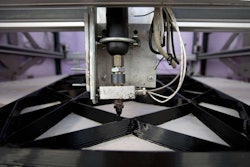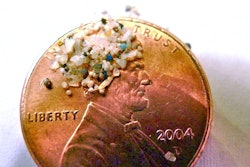HONOLULU (AP) — Many Hawaii residents were thankful for plentiful platters of ahi tuna they were able to enjoy over the holidays. But few realized the critical role the late Sen. Daniel Inouye played in making sure Hawaii fishermen could get it to them.
A federal rule allowing Hawaii-based fishermen to catch more bigeye tuna than permitted under international agreements can be traced to his time as chairman of the Senate Appropriations Committee.
In 2010, catch limits forced Hawaii fishermen to stop catching bigeye in waters west of Hawaii in November. That left Hawaii markets without much locally caught tuna just as holiday demand spiked.
This year, Hawaii longline fishermen hit their limit in August. But the National Marine Fisheries Service created new limits for U.S. territories like Guam and allowed Hawaii's fleet to use up to half of them.
The fisheries service's Pacific Islands regional administrator, Michael Tosatto, said Congress directed the federal agencies to create the quota transfer program in a 2012 appropriations bill.
Inouye was Senate appropriations committee chairman at the time, not long before his death in December 2012. The senator's then-chief of staff said Inouye was troubled to see local fishermen abiding by quotas that U.S. diplomats had agreed to, only to see foreign fishermen keep fishing.
"It was this big injustice," said Jennifer Sabas. "Our local guys — because of this State Department policy — were getting squeezed. And every time they turned their boat around they were watching the Taiwanese come in and just scoop fish right from out under them."
Environmental groups sued to block this arrangement, saying all nations should reduce their catch to protect a species that's being overfished. But U.S. District Judge Leslie Kobayashi ruled last month that the extra fishing is legal.
Part of the problem for Hawaii fishermen, said John Kaneko, program manager of the Hawaii Seafood Council, is that other nations don't reliably track their catch and quotas. Hawaii's take is strictly monitored and documented by the fisheries service, the longline fleet and the Honolulu fish auction, he said.
Further, small island nations with rich fishing grounds have no limits and may sell fishing rights, he said.
"If these island nations have no limit on the development of their own fisheries and they can trade on that limit, then there's essentially no quota out there that's being enforced except for the quota that's being applied to the U.S. boats," Kaneko said.
Much of the bigeye caught in the Pacific is snagged by vessels that use giant nets called purse seine. These vessels don't have bigeye quotas because they catch the fish accidentally.
Instead, the 26-member nation Western and Central Pacific and Central Pacific Fisheries Commission — which sets Hawaii's international catch limit — regulates the extent purse seiners use tools called fish aggregating devices to attract tuna.
Amanda Nickson, director of global tuna conservation at the Pew Charitable Trusts, said it's against the spirit of conservation or good management for any commission member to increase its catch because they feel others aren't being held accountable.
"Two wrongs do not make a right," she said. Though the U.S. fleet says it's the only responsible player, the quota transfer "is not responsible at all," she said.
Nickson said the commission must devise a way to hold all members accountable for their fishing.






















